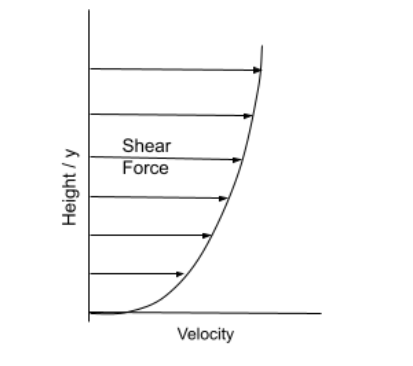Viscosity
If we drop water and honey from a height we could see that water drops suddenly while honey takes time to drop. Why is it so? The reason behind this is the difference in viscosity between those two substances. Water’s viscosity is low thus it drops and flows quickly, whereas honey’s viscosity is high compared to water thus it flows and drops very slowly.
What is Viscosity?
The Viscosity definition says it as, a measure of the resistance offered by a fluid to flow.
The SI unit of viscosity is Pascal Second. It is also expressed as Newton’s second per square metre.
Viscosity can also be considered as the thickness of fluid or resistance in submerging any object in any liquid. Such as, in our previous example. If we try to submerge any object in water, it will go inside easily without applying much effort. But, while submerging the same object in honey, we have to apply some effort. This effort is the resistance offered by honey and is the viscosity of honey.
Physics Behind Viscosity
Viscosity is the resistance offered by any fluid’s internal molecules to flow. Consider any two adjacent layers of fluid flowing in any direction. Now, when the fluid is flowing, these two layers rub on each other thus causing friction in between them and the greater the friction be, the higher will be the viscosity and the slower will be the flow. Again another doubt arises that there are layers between every fluid and every fluid’s layer rubs on each other. So, what causes the difference in resistance value? This is caused because of intermolecular attraction forces. Let’s again consider water and honey as in our earlier example. Honey’s intermolecular forces are higher than water and thus the friction produced by the rubbing of layers of honey will be higher and higher the viscosity than water.
This phenomenon or resistance can also be considered as shear force production between two layers. According to this viscosity is a property that shows the relation between viscous shear forces and the rate of change of deformation (how quickly shearing between two-layers occurs).
This can be better understood by Couette Flow. In the Couette flow experiment, we take two infinite long plates and fluid is trapped between those plates. The bottom plate is fixed with the ground and the top plate is free to move parallel to the bottom plate. The speed of the top plate is made too low (to avoid turbulence in fluid). When the top plate moves, we can see that the speed of each layer is greater than its bottom layer as shown in the figure below. Their speed varies as, zero at the bottom layer and some value at the top layer. A resisting force is being created by each layer of fluid on its upper layer.

Overall, force is in the opposite direction of movement of the top plate. Thus, an external force is required to keep the plate moving.
From this experiment, the resistive force applied on the top plate is governed by equation,
F=μAu/y ……………. I
Where,
F = Force experienced by the top plate
μ= Viscosity of the fluid
A = Area of Plate
u = velocity of top plate
y = distance of top plate from the bottom plate.
Dynamic and Kinematic Viscosity
Dynamic viscosity, also termed absolute viscosity, is the internal resistivity offered by any fluid to flow. The above experiment of Couette Flow determines the dynamic viscosity of the flow.
Kinetic viscosity is the ratio of dynamic viscosity to its density.
If we understand in simple physical words, kinematic viscosity explains how fast or slow any liquid is moving with an application of any external force. And dynamic viscosity gives the information of force required to move the liquid with any particular velocity.
Kinematic viscosity is formulated as,
= v=μ/p……………….. II
Where,
v= Kinematic Viscosity
μ= Dynamic Viscosity
p= Density of the fluid
And, Dynamic viscosity is formulated as,
…………….. III
Where,
= Shear Stress
μ= Dynamic Viscosity
du/dy = Velocity gradient
Both Equations I and III can be rewritten and used to find dynamic viscosity based on the given values.
Factors affecting viscosity
- Temperature: From everyday knowledge and observance we can see that if a viscous liquid like soup is heated its viscosity reduces. This happens because the temperature is the kinetic energy of a molecule. When the kinetic energy of a molecule increases, it moves more frequently and easily. Therefore, Viscosity is inversely proportional to temperature. However, for gases viscosity is directly proportional to temperature.
- Material: Viscosity is a function of the material. Such as water having a viscosity of 1.0020 mPa s, at 20 degrees temperature. Whereas gases possess viscosity in a range of 1 to 10 Pa s. Gels, Emulsions, milk, everything has their specific viscosity.
Conclusion
To sum up, viscosity is the resistance offered by any liquid to flow due to internal friction between adjacent layers. Viscosity is of two kinds, Dynamic Viscosity and the Kinematic viscosity. Couette flow experiment best determines the dynamic viscosity. Also, viscosity is affected by temperature. For liquids, viscosity is inversely proportional to temperature and for gases it is directly proportional to temperature.
 Profile
Profile Settings
Settings Refer your friends
Refer your friends Sign out
Sign out






